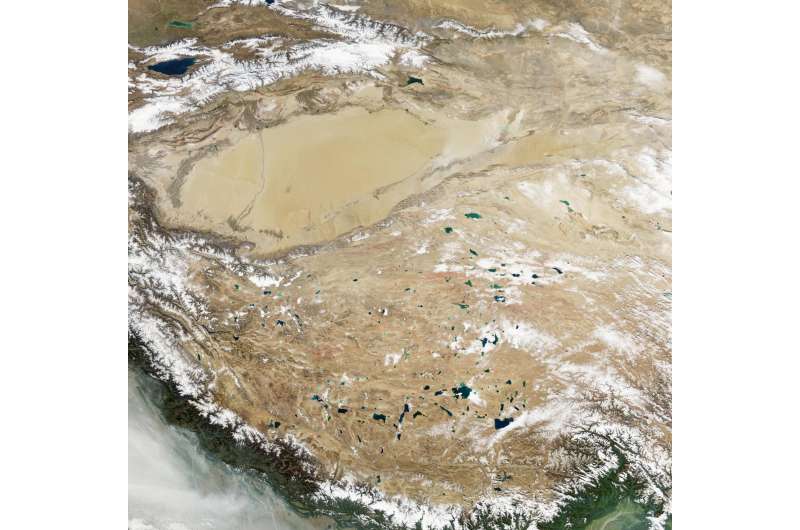Researchers reconstruct historical non-growing-season precipitation in southeastern Tibetan Plateau

A joint research team led by researchers from the Xinjiang Institute of Ecology and Geography (XIEG) and the Research Center for Eco-Environmental Sciences (RCEES) of the Chinese Academy of Sciences has reconstructed the historical non-growing-season (from November of the previous year to February of the current year) precipitation in the southeastern Tibetan Plateau using tree rings.
The study was published in Climate of the Past.
The Tibetan Plateau plays a key role in regional and global atmospheric circulation patterns influencing the climate of southwest China as well as all of Asia due to its geographical extent and position within the global circulation system.
However, there are few reports about the historical precipitation reconstruction in this region, restricting our evaluation on the current trend of precipitation variation from a long-term perspective and its impact on the regional ecosystem.
In this study, the researchers collected tree ring samples from Tsuga forrestii trees at high altitudes of Lijiang region in the southeastern Tibetan Plateau and established residual tree-ring chronology. They then reconstructed the non-growing-season precipitation history according to the results of tree growth and climate relationship analysis.
The results showed that the non-growing-season precipitation was the most important constraining factor on the radial growth of Tsuga forrestii, and the relationship between non-growing-season precipitation and radial tree growth was relatively stable over time.
The reconstructed precipitation series explained 28.5% of the variability in actual non-growing-season precipitation and showed similarities with existing reconstructions of hydroclimatic factors.
The reconstruction had a large area of spatial representativeness in the southeastern Tibetan Plateau, and in recent years, the non-growing-season precipitation showed an increasing trend implying that it would benefit the development of regional forest ecosystem.
Switch in the climatic factors controlling vegetation dynamics on the Tibetan Plateau
Maierdang Keyimu et al, A 406-year non-growing-season precipitation reconstruction in the southeastern Tibetan Plateau, Climate of the Past (2021). DOI: 10.5194/cp-17-2381-2021
Citation:
Researchers reconstruct historical non-growing-season precipitation in southeastern Tibetan Plateau (2021, November 26)
retrieved 26 November 2021
from https://phys.org/news/2021-11-reconstruct-historical-non-growing-season-precipitation-southeastern.html
This document is subject to copyright. Apart from any fair dealing for the purpose of private study or research, no
part may be reproduced without the written permission. The content is provided for information purposes only.
For all the latest Science News Click Here
For the latest news and updates, follow us on Google News.

